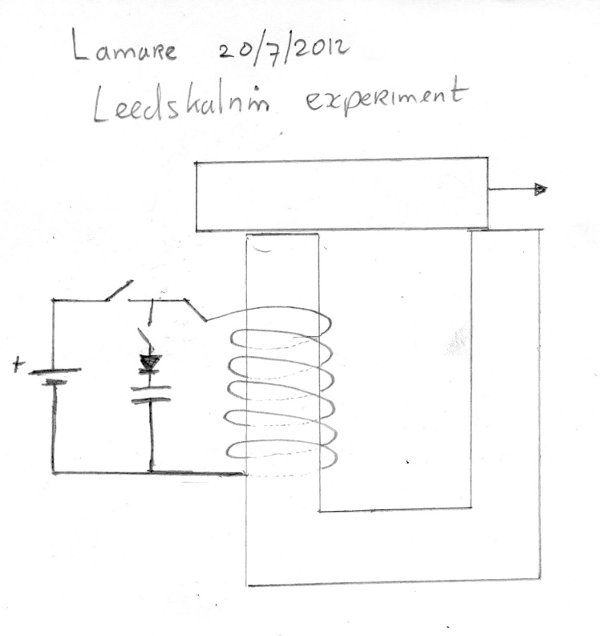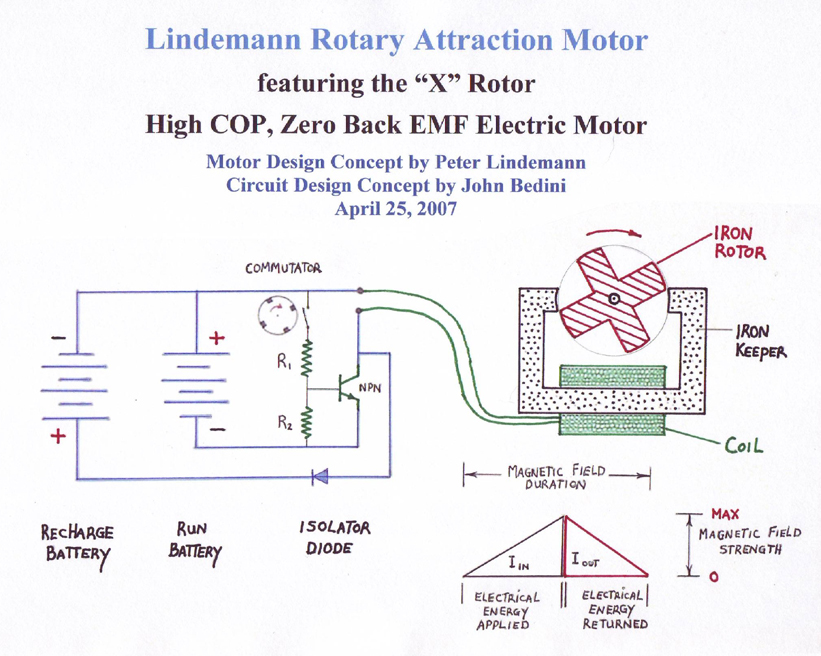Originally posted by lamare
View Post
US Patent 3,890,548 Edwin Gray "Pulsed Capacitor Discharge Electric Engine"
http://www.tuks.nl/pdf/Patents/Gray/...US3890548A.pdf

At first glance, it looks like the asymmetry is in the 3 pole rotor, but here you do not have a more or less continuous path for the magnetic field to follow trough the rotor.
However, the magnetic field must go somewhere and tends to establish a closed loop. It appears that mother nature does us a favor under certain conditions, which is that a magnetic field is amplified by an iron core, because charge carriers do extract energy from the aether and emit that in the shape of a magnetic field. So, it appears that we have a principle by which to extract energy from the aether by means of the establishment of a closed magnetic loop.
On the rotor there are two sets of magnets in line, which both consist of a major and a minor magnet.
One could guess that these sets are fired in the opposite polarity and thus a magnetic field can establish itself inside the rotor, along the length of the rotor.
The question is: how are the major and minor magnets fired with respect to one another and at what moment in the cycle are they fired?
Another question is: could it be that we are looking at the superposition of a D.C., quasi permanent, attracting magnetic field, which is disturbed at the moment the coils fire?
Update: According to the patent description, the major and minor coils are fired independently, and always either the major or the minor coils, at the moments they face one another. So there goes my theory of major/minor coils having something to do with Wheatstone's delay of a high-speed pulse....
Update 2: It appears that if the minor coils fire at 13 1/3 degrees from the top position in the figure, that it may possibly induce an attracting force between the major cores 120a and 121. Have to think about this further, because you also have the pairs along the length section. One would expect mother nature to find the shortest closed loops that it can find, so it can create attracting forces....
Update 3: The degrees at which the coils fire are visible in the figure. It appears as though the minor coils are producing distracting "pushing" forces because they are fired while the cores face one another directly, while the major coils produce an attracting force, because these are not directly over one another at 26 2/3 degrees.
If that is correct, the power is developed by the major attracting coils, while the minor coils are meant to push the rotor over the dead points, whereby the energy spend in the minor coils is mostly losses (except if they indeed already pre-magnetize the major coils), while the major coils can show a gain along the principle extrapolated from Leedskalnin's experiment (see below). If that is correct, one would expect the major coils to be somehow discharged/demagnetized at around 40 degrees in the cycle.
The latter is possible, because if the major coil fires at the point the major coils enter contact, you get a build up of magnetic force in some closed loop, until the major coils face one another completely. From that moment, the field starts collapsing, producing a BEMF, which may generate a high voltage, which can be discharged trough a spark gap, so the attracting force is neutralized an cannot hinder the further rotation of the rotor. IIRC, there is an "overshoot" spark gap somewhere in the design...
From the figure, it appears as though the major an minor coils fire almost at the same time after all...
And if there is to be a closed magnetic loop trough the rotor, one would expect two of the major coils to have the same polarity, while one has an opposing polarity and/or the two sets of coils along the length direction having an opposite polarity. I would guess the latter to be the case....






Comment